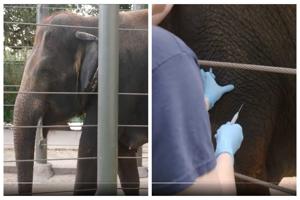
1 Most artemisinin-based combinations used in malaria-endemic African countries are produced outside the continent. For instance, to date, there are 18 million doses of malaria vaccines available for priority allocation in selected African countries [18]. This is even though some African countries have some capacity to produce vaccines nationally (Fig. Vaccine production categories shown with surface colour for each country are as follows: Production, countries with active vaccine manufacturing facilities and projects; Project, countries with vaccine manufacturing projects; None, countries without vaccine manufacturing facilities or projects. African countries need to transform into an environment that disincentivizes corruption and mismanagement.
Reliance on imported medicines has traditionally been a major weakness of malaria control efforts in Africa. About 96–95.4% and 75.7–74.5% of global malaria deaths in 2021–2022 occurred in the WHO African Region (AFR) and among children younger than 5 years (U5) in the region, respectively [7, 12, 13]. Yet the continent has to import medicines to protect itself against the disease. Only 5% and < 1% of the medicines and vaccines Africa consumes and 3% and 0.1–0.2% of the global supply are produced on the continent, respectively [9, 10, 14]. The reliance on imported drugs also affects artemisinin derivatives used for artemisinin-based combination therapy (ACT). These are currently strongly recommended by the WHO as the cornerstone for malaria case management based on high-certainty evidence—artemether-lumefantrine, artesunate-amodiaquine, artesunate-mefloquine, dihydroartemisinin-piperaquine, artesunate-sulfadoxine-pyrimethamine (SP) (ASP)—as well as artesunate-pyronaridine [4]. Most of these ACT medicines are produced outside the continent, mostly in India [5] (see Fig. 1). This inequitable reliance on imported essential medicines perpetuates the vulnerability of national anti-malarial efforts to disruptions and shocks of global supply chains and systems, as observed at the height of the COVID-19 pandemic. This creates important risks to population health and global health security, thus acting as a structural obstacle to malaria elimination and eradication.
Fig. 1 Most artemisinin-based combinations used in malaria-endemic African countries are produced outside the continent. The size of each leftmost and central node and each flow on the left and right side is proportional to the quantity of ACT medicines exported and imported by each producer and consumer country, respectively. The size of each rightmost node represents the quantity of each drug combination shipped. The colour of each left side and right side flow, as well as the leftmost and central nodes, represents each producer and consumer country, respectively. The colour of the rightmost nodes represents each drug combination. Producer and Consumer denote exporter and importer countries or territories represented by ISO 3166-1 alpha-3 codes, respectively. ACT medicines used for artemisinin-based combination therapy, AL artemether-lumefantrine, AP artesunate-pyronaridine, AS-AQ artesunate-amodiaquine, AS-MQ artesunate-mefloquine, ASP artesunate-SP, DHA-PPQ dihydroartemisinin-piperaquine. Data sources: [4, 5] Full size image
Regional and global efforts to boost local pharmaceutical production (LPP) in Africa have yielded inconsequential results. This is despite the adoption of the Pharmaceutical Manufacturing Plan for Africa (PMPA, aimed at catalyzing LPP to improve public health outcomes) in 2007 and the endorsement of its Business Plan (BP, aimed at providing approaches to accelerate the implementation of the PMPA) in 2012 [15,16,17]. Global inequity in drug manufacturing is also being observed with the malaria vaccines. For instance, to date, there are 18 million doses of malaria vaccines available for priority allocation in selected African countries [18]. How many of these available vaccines were manufactured in an African country? Data shows that all doses of Mosquirix, the trade name of RTS,S, used in Kenya as of 16 September 2023 were imported from Belgium [5]. This is even though some African countries have some capacity to produce vaccines nationally (Fig. 2). This status quo implies that with the expected increase in the supply of malaria vaccines as the cost decreases over time might come further reliance of African countries on imported medical products (MPs).
Fig. 2 Geospatial distribution of vaccine production and health financing in Africa. Vaccine production categories shown with surface colour for each country are as follows: Production, countries with active vaccine manufacturing facilities and projects; Project, countries with vaccine manufacturing projects; None, countries without vaccine manufacturing facilities or projects. The colour of each dot is proportional to government health financing measured as the geometric mean of central government health spending as a share of general government expenditure in 2019–2021; the variation in colour intensity between or beyond the two values shown in the legend represents the corresponding variation in government health financing. Most countries do not comply with the Abuja Declaration of 2001 to allocate ≥ 15% of their annual budget to improve the health sector. Investment in vaccine manufacturing without compliance with the Abuja Declaration may result in an important diversion of government funds from the health sector, as suggested by the inverse association between the vaccine production status and government health financing observed in the current analysis (η2[H] = 0.17). Data sources: [6,7,8,9,10,11] Full size image
The COVID-19 pandemic has raised attention to the necessity to produce medicines locally or regionally and even catalyzed processes that could otherwise have taken longer to materialize. Modular mRNA production facilities have been developed by pharmaceutical companies to improve affordability and scale up accessibility of mRNA-based technologies for LPP in low- and middle-income countries (LMICs) [19, 20]. The first such a facility (‘‘BioNTainer’’, a platform for mRNA production) was set up in Kigali, Rwanda, in 2023. Just as COVID-19 ushered in the era of mRNA therapeutics and was a catalyst to install some capability for LPP in Africa, the roll-out and introduction of RTS,S and R21 on the continent could thus be leveraged to boost and scale up such LPP capability to meet the demands and accelerate attainment of universal malaria immunization coverage. However, whether, when, or how that will be attained hinges on the solidity and stability of investment in scientific, management, and financing capabilities and practices on the continent (see domain ‘‘Research and development’’). If the hindrances associated with the human component are tackled effectively and sustainably, then these facilities could become an important asset that the continent could leverage to expand its capability to produce sustainably malaria vaccines to reduce the importation and associated public health consequences.
The Framework for Action (FFA) developed by the Partnerships for African Vaccine Manufacturing (PAVM, spearheaded by the Africa Centers for Disease Control and Prevention, established by the African Union (AU) in 2021), approved by the AU in 2022, aims to enable the continent to meet 60% of its vaccine needs through local production by 2040 in the context of AU Agenda 2063 [10]. Ensuring that the PAVM-FFA does not face the same difficulties that the PMPA (adopted in 2007) and other valuable strategic and higher-level mechanisms and frameworks faced is a major challenge. Current data on the indicators established by the PMPA-BP [16]—e.g., (i) proportion of pharmaceutical market supplied by African-based manufacturers, (ii) proportion of substandard MPs in the market, (iii) number of companies achieving WHO prequalification, among others—show negligible progress. The reliance on imported medicines continues to date (see data above and Fig. 1). The percentage of substandard and falsified (SF) medicines was estimated at 5–40% and 19–50% in several countries on the continent and in the Sahel countries in 2018, respectively [21]. Furthermore, it was only in 2022 that the first African-based manufacturer, Universal Corporation Limited (Kenya), received WHO prequalification to produce SP [22]. This is an essential medicine used in the chemoprevention of malaria in pregnancy (intermittent preventive treatment in pregnancy [IPTp]) and childhood (seasonal malaria chemoprevention [SMC] and perennial malaria chemoprevention [PMC]) and as a partner drug for ACT with ASP (also see Fig. 1). It can be seen that the PMPA, despite its noble aspirations, has delivered little impact to date.
Major hurdles to these and related mechanisms and frameworks typically reside in their implementation. The rampant epidemics of corruption and mismanagement in most of the continent [23, 24] weaken not only public financing of critical infrastructure and services, but also regulatory frameworks, labour productivity, enforcement of rules, and other prerequisites for competitive LPP and trade [25,26,27,28,29]. The placement of unqualified or less qualified professionals in critical positions [30], a manifestation of these epidemics, lessens the impact of capacity building. Government non-compliance, e.g., with the Abuja Declaration of 2001 [6] (see Fig. 2), also a consequence of mismanagement [24], compounds the difficulties. These epidemics hinder, e.g., cross-border trade of active pharmaceutical ingredients (APIs) and sustainability of pharmaceutical investments. Thus, corruption and mismanagement are the key barriers to LPP and trade, although the nexus might not always be obvious without a rigorous analysis. Progress tracking is another challenge. An important improvement in PAVM-FFA compared to PMPA-BP is that the former has short-, medium-, and long-term key performance indicator targets [10], whereas the latter has monitoring and evaluation (M&E) indicators without targets [16]. However, for both PAVM-FFA and PMPA-BP, no baseline survey was conducted for their indicators, and research funding (e.g., to assess medicine quality) is scanty (see domain ‘‘Research and development’’). As a result, data, e.g., on compliance with pharmacopoeia requirements, is limited on the continent [21], thereby complicating the M&E of, e.g., the percentage of SF medicines nationally over time. These difficulties are far from new but are typically neglected by efforts aiming to advance LPP and trade in Africa.
Ensuring different outcomes and impacts for PAVM-FFA requires transformation, not simply incremental changes, including in business and governance practices not only across the continent but also in global organizations. A rigorous study of the root causes of chronic non-compliance by AU member states with their regulations and commitments is needed to allow its effective tackling. It is critical to leverage regional, continental, and global initiatives and organizations, e.g., the African Continental Free Trade Area (AfCFTA), World Trade Organization (WTO), United Nations Industrial Development Organization, and WHO, to reduce duplication of efforts, minimize costs, enforce compliance, overcome supply chain barriers, and ensure sustainability. Reform of the international system is necessary to strengthen the capacity of regional, continental, and global organizations to ensure the cost–benefit and sustainability of international investments and strategies to more effectively support LPP and trade in Africa. Doing so could contribute to reducing greatly historical inequities in pharmaceutical manufacturing and trade (as well as R&D). This could allow countries that most need anti-malarial drugs to produce and purchase them locally or regionally and thus remove a major obstacle to malaria elimination and eradication (Fig. 1).
In 2022, the WTO temporarily waived the Trade-Related Aspects of Intellectual Property Rights (TRIPS) agreement on MPs for COVID-19, given the exceptional circumstances of the pandemic [31]. This measure provided a critical facility for the international transfer of knowledge and technology for LPP of MPs for the prevention, diagnosis, and treatment of COVID-19. Given the epidemiological and economic burden of malaria in the AFR [12, 13, 32, 33], a similar measure could be warranted to boost LPP and accelerate progress towards a world free of malaria. To ensure sustainability and maximize impact, any TRIPS agreement waiver on anti-malarial MPs should be coupled with adequate measures to: (i) incentivize local and international drug innovation and R&D (see domain ‘‘Research and development’’), (ii) strengthen local and continental regulatory, surveillance, and quality assurance capabilities, and (iii) boost continental trade of raw materials and APIs by leveraging the AfCFTA. Making access to TRIPS agreement waivers and similar initiatives conditional on each country’s commitment and progress on these fundamental prerequisites is critical to attaining the transformational changes needed to catalyze advancement in disease control. Failure to do so could complicate the political likelihood or feasibility of a TRIPS agreement waiver for anti-malarial MPs and similar initiatives, e.g., a pandemic treaty.
Transfer of manufacturing plants to endemic countries, an asymmetric initiative, may not on its own be sustainable. African countries need to transform into an environment that disincentivizes corruption and mismanagement. This is a necessary condition to attain a competitive LPP and trade to more effectively combat their major causes of death and suffering, e.g., malaria, towards disease elimination and eradication.
©All Rights Reserved.







